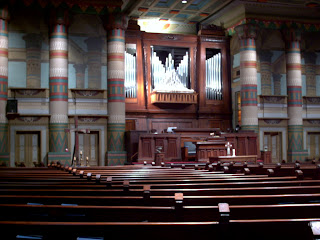
My collage has a simple layout. I love simple things in life. I chose a path in some grass to represent a journey which I believe every person is on one. The 15th avenue house represents where Belmont is at as well as the street I live on. There is a house, representing community and the house I live in. There is a picture of a family with the order of birth that my family has and we always went to the beach so it was a good representation for family. There is also a plane which represents that I love to travel and experience new things. The sea creatures in the sky represent creativity. I am the parasailer off the boat and my friends are on the boat, having a good time with me. Everything is relative to history because over history houses, planes and boats have changed and are more relevant to today’s time. The tree also represents history, my history; it is growth over time as well as roots. The world today is open to creativity so I feel that is represented as well in my collage. Art is important to me so I feel it’s simply represented by my creativity and fun I had in creating this collage.
• Decisions: I chose to do a simple layout because it was the first layout that came to me. Also I like simplicity so it fits me well I think. A couple of decisions I made were to have a “sea themed” sky, for two reasons: that being I kept finding excellent sea images in my magazines as well as I love the sea and think the sky and sea are very similar in ways. I chose dirt from the ground to incorporate as well as a little house, family cutout and drawn 15th avenue sign to represent where I live as well as Belmont.
• Color: I chose basic green grass color cutouts for the grass, a painted light blue sky and a white sun faded out to yellow as the main color components. Obviously they work well together because these colors are often found in nature together naturally.
• Light: I chose the sun as my light source. I love the sun and feel it’s symbolic as well. It’s a constant in ever changing times. The light fades out from the sun into the sky
• Texture: Other than the texture found in the cutouts as well as the painted clouds, there is actual texture found in the dirt path. I used dirt from outside my house.
• Volume: There is weight in the tree mainly. I tried to find good tree cutouts that would give the tree texture as well as depth.
• Line: There is implied line between the people on the boat (friends) to the parasailer(me) as well as implied line from the sea turtle and other fish that goes off to the right as well as in the opposing lower corner implied line and direction from the plane flying off my poster to the left.
• Space: There is a foreground which includes the grass and path, which leads to the background which is divided by the horizon line. In the background the house appears smaller in relation to the path in the foreground
• Scale: The creatures in the sky as well as the sun are the largest objects in the collage. The sun is ever present it rises and falls everyday constants are important to me in my life. They keep my grounded. Also I put the sea creatures in the sky to be creative and I love creativity. It is really important to me and who I am.
• Symbolism: The four symbols are: The tree which stands for growth as well as roots, the house stands for community, I live in a community house with 5 other people and it’s important as well as shapes me, the path which represents a journey which I believe everyone is on one that lasts their whole lives, and the fourth is the plane which stands for travelling and being free to leave places as well as go places.
















